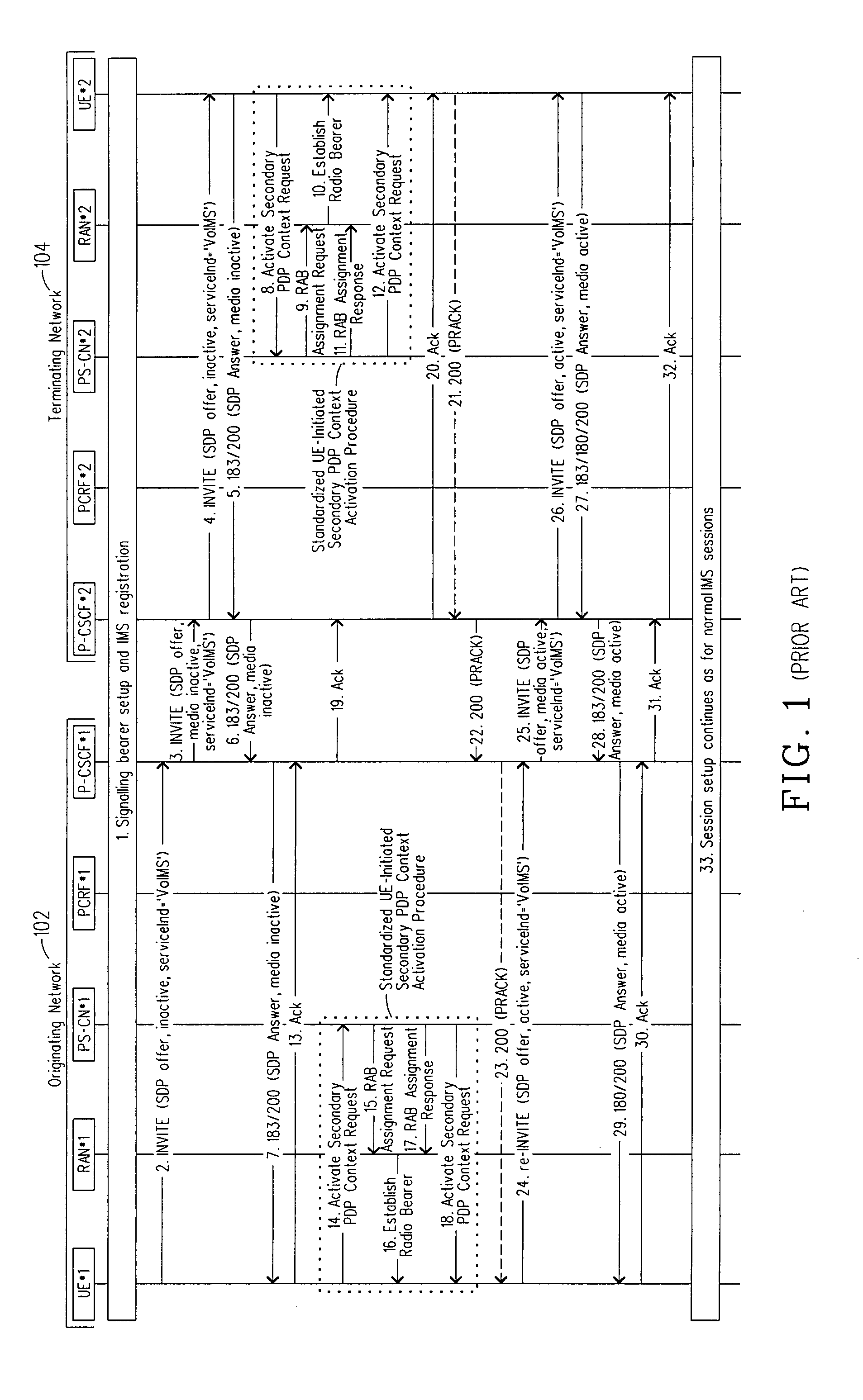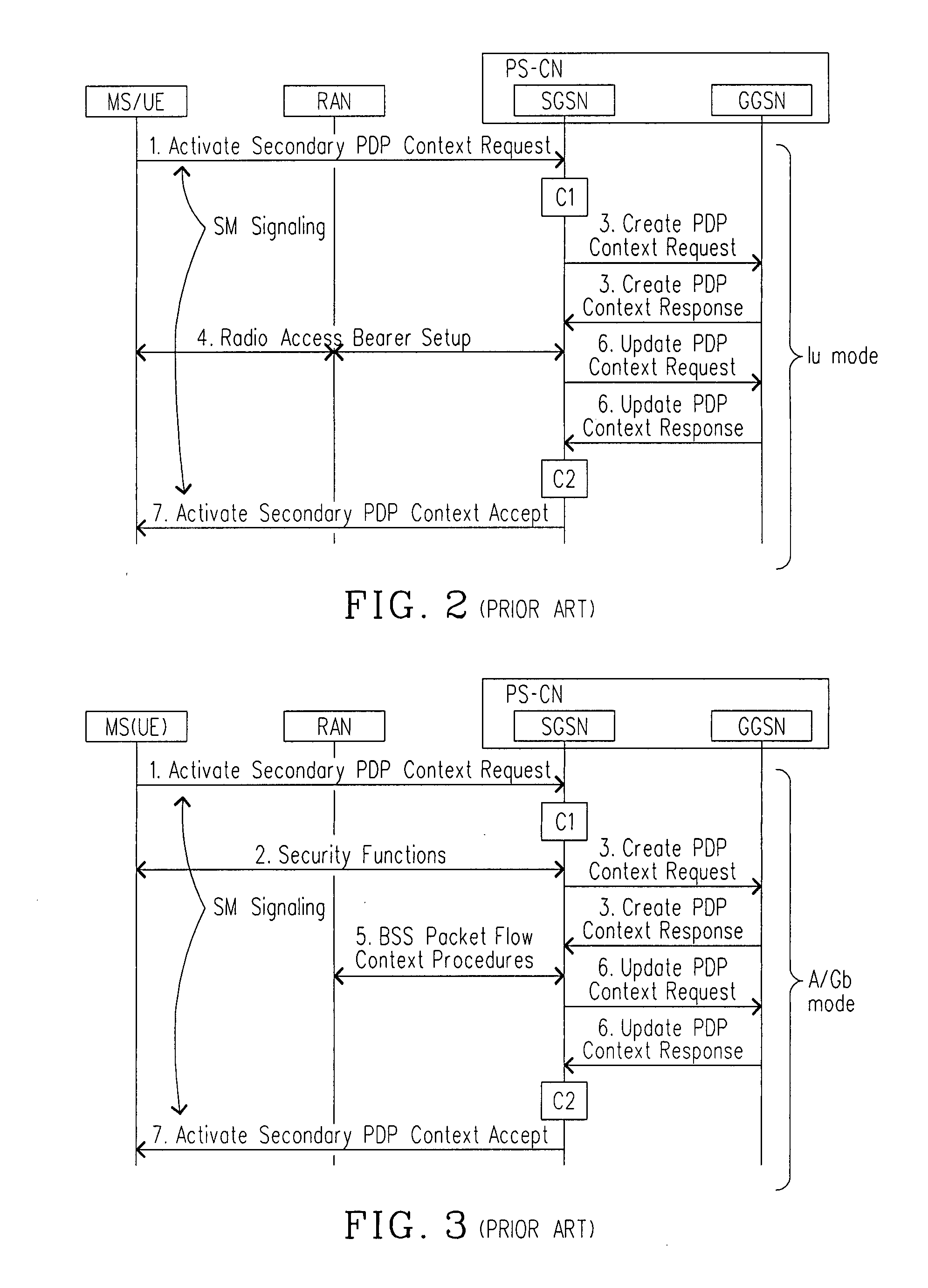Minimized setup time for IMS multimedia telephony using PRE provisioned resources reserve at answer
- Summary
- Abstract
- Description
- Claims
- Application Information
AI Technical Summary
Problems solved by technology
Method used
Image
Examples
Example
1ST EMBODIMENT
Reducing IMS Setup Time
[0137]FIG. 7A is a step-by-step flow diagram used to help describe a method that can be used to establish a media flow between two GPRS UEs (a GPRS UE is a terminal / device that supports packet data service e.g., GSM / WCDMA) in accordance with a first embodiment of the present invention. In this embodiment, UE#1 initially indicates that resources are not reserved in the SIP INVITE message (see step 1). And, then the originating network 702 initiates the resource reservation so the media flow can be established between UE#1 and UE#2. The steps in this flow are as follows: [0138] 1. UE#1 and UE#2 perform GPRS attach (see 3GPP TS 23.060 section 6.5), activate PDP context for IMS signaling and register in IMS (see 3GPP TS 24.229 section B.2.2.1 and 5.1.1). [0139] 2. UE#1 sends P-CSCF#1 an INVITE which includes a ‘SDP offer’, a ‘media inactive / resources not met’, and a ‘service indicator=VoIMS (for example)’. The ‘media inactive . . . ’ indicates that...
Example
Example #2 (FIG. 8B)
[0194] In example #2, it is assumed that ISPCA method is used but it is not possible to pre-define the CtxtID parameters in 3GPP. As such, in this example the CtxtID parameters and other parameters in example #2 are assumed to be standardized in IETF and then piggy-backed in SIP / SDP application level signaling. These parameters include: [0195] ISPCA supported in SIP (e.g. sent to the UE during IMS registration or at the setup of the session). [0196] a: N-SAPI per m-line in SDP. [0197] a: TI per m-line in SDP. [0198] a: L-SAPI per m-line in SDP. [0199] a: Diffserv Marking per m-line in SDP and possibly other TFT information (not shown).
[0200] An advantage of adding the CtxtID parameters to SIP / SDP is that fewer values need to be pre-defined and that the ISPCA procedure can be easily used for any media component of the SDP.
[0201] In FIG. 8B, it is assumed the bearer characteristics for the media to be used are well-known and it also assumed that an optimized bea...
Example
3RD EMBODIMENT
Reducing IMS Setup Time (Reserve at Answer)
[0221]FIG. 9 illustrates a step-by-step flow diagram which is used to help describe a method that can be used to establish a media flow between two GPRS UEs in accordance with a third embodiment of the present invention. In this embodiment, the total end-to-end call setup signaling flow shown in FIG. 7A was looked at and then several improvements were made to reduce the setup time for an IMS voice call (for example). The setup time for an IMS voice call is reduced in this embodiment by minimizing the signaling over the air-interface and by minimizing the end-to-end signaling between the UEs. This is achieved by: (1) using the network initiated ISPCA procedure (or the network initiated procedure of FIG. 6); and (2) assuming that in most cases radio- and PS-CN resources for the voice communication service will be available in the network.
[0222] In this case, the UE (UE#1 and / or UE#2) indicates that radio resources have been r...
PUM
 Login to View More
Login to View More Abstract
Description
Claims
Application Information
 Login to View More
Login to View More - R&D
- Intellectual Property
- Life Sciences
- Materials
- Tech Scout
- Unparalleled Data Quality
- Higher Quality Content
- 60% Fewer Hallucinations
Browse by: Latest US Patents, China's latest patents, Technical Efficacy Thesaurus, Application Domain, Technology Topic, Popular Technical Reports.
© 2025 PatSnap. All rights reserved.Legal|Privacy policy|Modern Slavery Act Transparency Statement|Sitemap|About US| Contact US: help@patsnap.com



